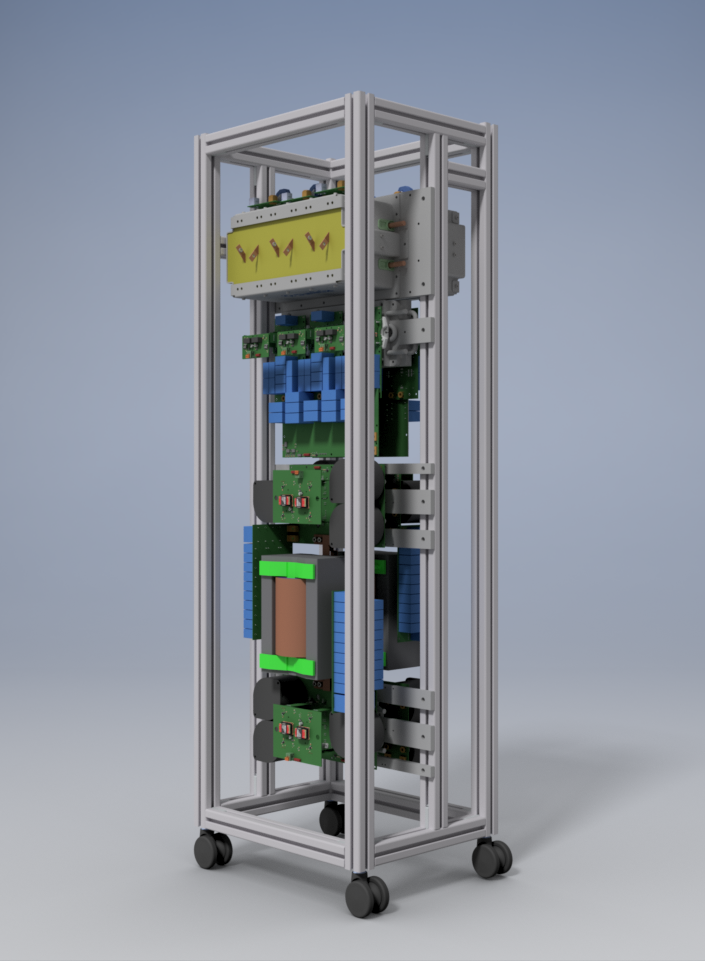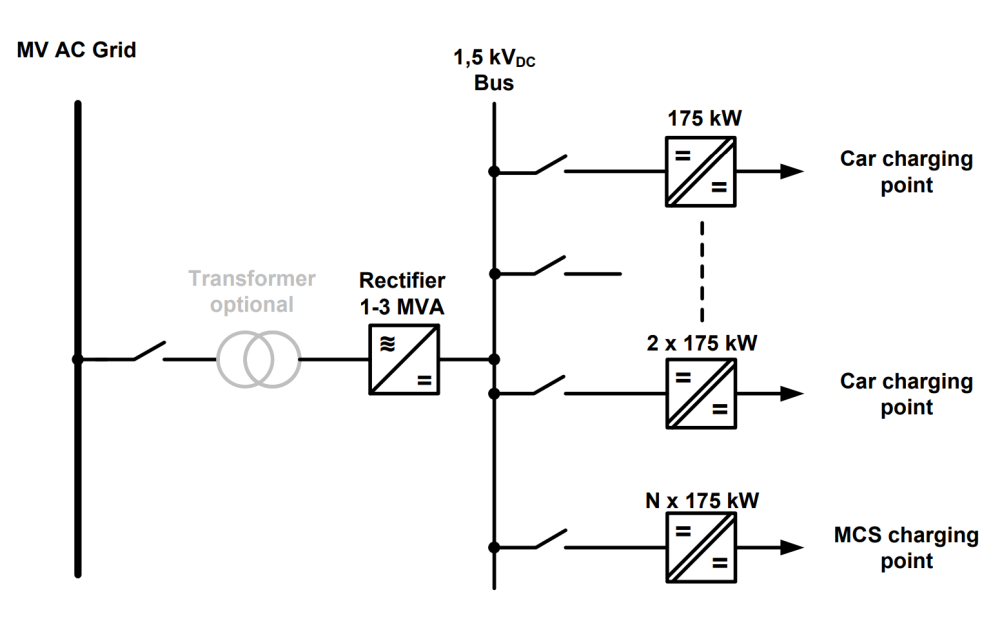| Duration: | 07/2021 - 10/2024 |
| Contracting Authority/ Sponsors: | Federal Ministry of Economic Affairs and Climate Action (BMWK) |
| Project Partners: | Sumida Components & Modules GmbH, Infineon Technologies AG, AEG Powersolutions GmbH |
| Project Focus: |
MS Charging Station
HV-SiC converters for powerful electric charging stations on the medium-voltage grid for fast charging of cars and vans


The charging capacity of electric vehicles is constantly increasing. For this reason, charging stations on highways or in parking garages will have to deliver many times more power in the future and cannot simply be connected to the low-voltage grid as before.
The project aims to develop a power-electronic medium-voltage system technology for electric charging stations and parking garages, thus contributing to the development and production of infrastructure components and the integration of electromobility into the energy system. The core of the development is a compact power electronic module with 2 kV SiC power semiconductors and an MF transformer with an output of 175 kW.
The transition to more electric vehicles goes hand in hand with the development of the necessary charging infrastructure. The number of electric vehicles in Germany is currently increasing rapidly. As with today's petrol and diesel vehicles, there will be a need for electric charging stations where several vehicles can charge their traction batteries quickly and at high power. This is particularly necessary on highways, but also in cities. On average, the power required for fast charging a vehicle is around 150 kW. A further increase in charging capacity is expected in the future.
A conventional filling station usually has eight pumps. Refueling takes about 5 to 8 minutes. As electric charging is slower, it can be assumed that more charging stations than conventional petrol pumps are needed to achieve a comparable vehicle throughput. Assuming 15 to 25 parking spaces for simultaneous fast charging, the total capacity of the electric charging station would be around 1.5 to 3.5 MVA.
This raises two important points. Firstly, electric charging stations cannot be connected to the low-voltage grid in the future, as the average power requirement would exceed 300 kVA, even if the system is not fully utilized. Even if the electric charging station is connected to the medium voltage, the distribution within the system must not be at low voltage. The long cable lengths and high outputs lead to high installation costs and high losses in the cables.
The aim of this project is to develop a power-electronic medium-voltage system technology for electric charging stations. This is based on a medium-voltage network that is rectified to a voltage of 1.5 kVDC by a rectifier. 1.5 kVDC was chosen because this is the limit of low voltage and other standards apply above this value. An electrically isolated converter couples the DC distribution network to the vehicle battery and controls the fast charging. The voltages of the vehicle battery range from 200 - 950 VDC. The output of one DC converter is 175 kW. They are designed so that they can be easily connected in parallel in the system. This modular concept makes it possible to build both lower-power charging stations for cars and higher-power stations for vans and trucks by connecting them in parallel.